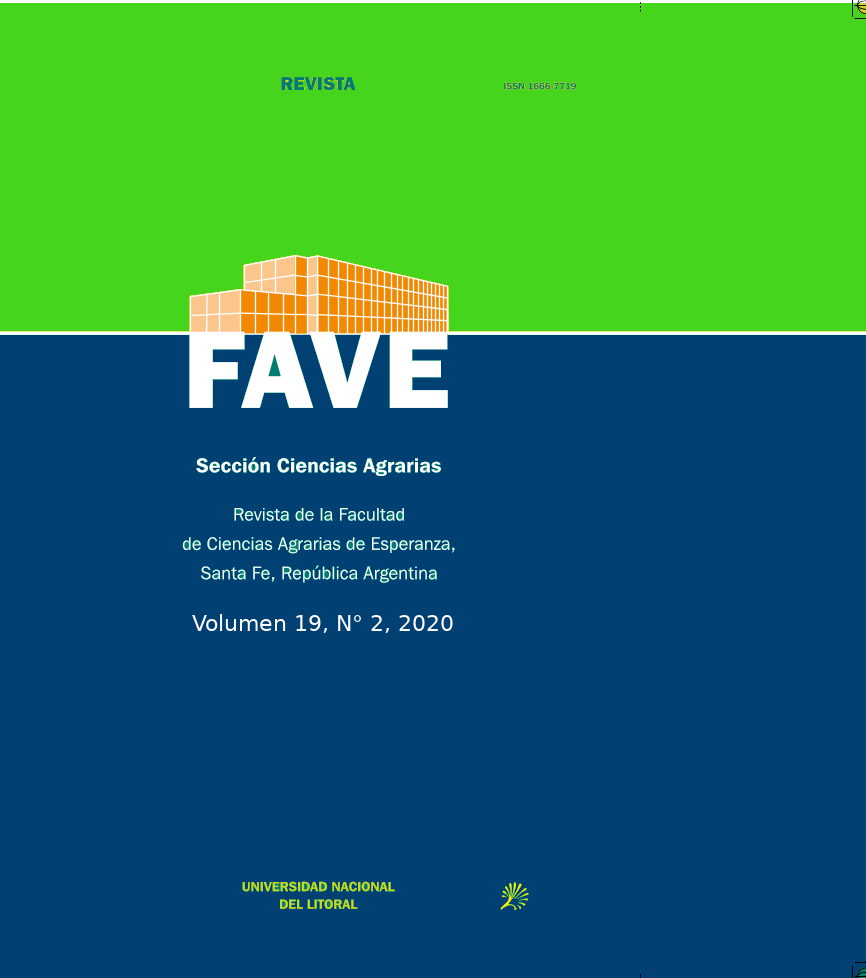Cover crops in subhumid environments: poace and legume as antecessors of the sunflower.
DOI:
https://doi.org/10.14409/fa.v19i2.9753Keywords:
vetch, rye, dry matter, water cost, productionAbstract
Cover crops (CC) are used traditionally to control erosion problems, improve water collection, distribution and storage, reduce compaction, and improve soil carbon and nitrogen balances. This work aimed to provide zonal results regarding the contributions of CC on resource use effi ciency and sunfl ower productivity. During 2017 and 2018, six CCs as sunfl ower predecessors in Coronel Suárez (Southwest of Buenos Aires) were tested. Soil water and dry matter, nitrogen and vegetable yield were evaluated. The difference in edaphic water content upon drying of the CC with respect to the conventional fallow (BC) varied between -8 and 15 mm. The water use effi ciency (EUA) ranged from 5.59 kg MS mm -1 in vetch (V 1 ) and 16.16 kg MS mm -1 in oats (A). The highest yields were obtained with V 1 (2379 kg ha -1 ) and the lowest with A (1561 kg ha -1 )

















